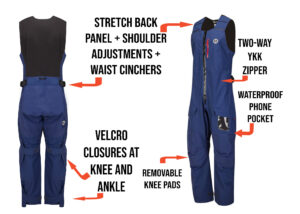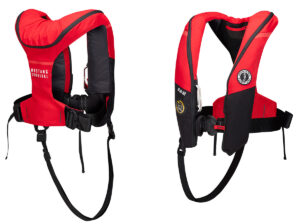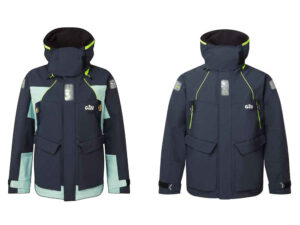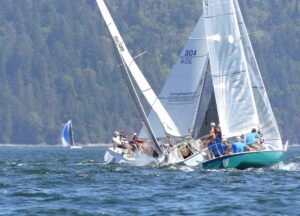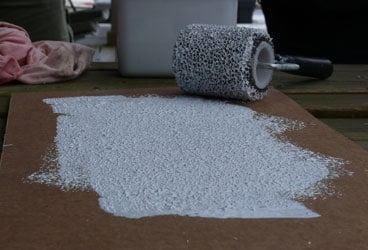
Using the special roller, you can control the texture of the acrylic non-skid coating Kiwi Grip.
On a recent trip to Seattle, I had the chance to meet Willy Stiggelbout, whose company, Pachena, is the North American distributor for a product called Kiwi Grip. An alternative to traditional non-skid coatings– which generally require you to add the grit separately– Kiwi Grip is a hard acrylic polymer that gets its grip from tiny peaks created in the application process. The coating has a pudding-like consistency, and when you roll it on with a special plastic roller, it dries to the texture of mini Himalayas.
The cool thing about Kiwi Grip is you can control the severity of the surface by altering your rolling technique. For max grip on the foredeck, roll out higher peaks; to tone down the butt-chafe factor of your cockpit seats, make fewer passes with the roller, or sand down the peaks once dry.
Stiggelbout was kind enough to demonstrate the application process, rolling out a small quantity of Kiwi Grip on a piece of cardboard near the dock where he keeps his round-the-world cruiser, Pazzo, which is itself a floating testament to the product’s durability. Stiggelbout even tasted a fingerful of the stuff to prove its eco-friendliness.
I have yet to try Kiwi Grip for myself, but Sailing World sales representative David Gillespie used it on the deck of his Santana 20 and had this to say:
I decided to go with Kiwi Grip because it requires very little surface prep, can be applied right out of the can without having to mix in grit, and has a short curing time. It really was as easy as one, two, three.
First, I washed the deck using Simple Green and 3M scrubbing pads (40 minutes). Second, we taped off the boat (two hours). Third, we applied the paint (three hours). It’s best applied with a team, with one person applying the paint and the second dialing in the texture using the special roller supplied by the company. The amount of product used and the pressure applied by the roller determine how aggressive the texture becomes.
We started at the back of the boat using minimal texture, as we would be sitting on the deck and wanted to minimize skin loss. We went for more texture on the foredeck. The end result was close to perfect. The foredeck has tons of grip, and our new bow person no longer has to brace herself to keep from sliding off. And although I tried to convince the driver that the 80-grit texture he was sitting on would sand the cellulite off his butt, he opted for a quick once over with sandpaper to knock the peaks down a bit.
Kiwi Grip is available in a variety of colors, from seafoam green to white. The one-quart size costs $35, the one-gallon size, $115.

